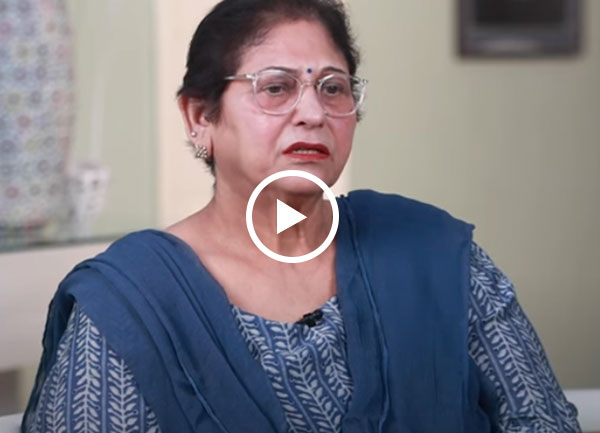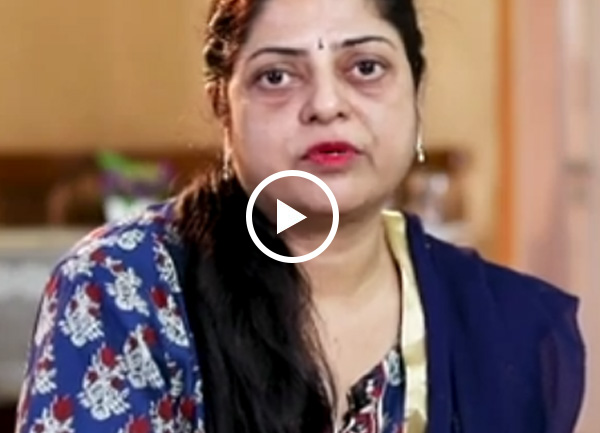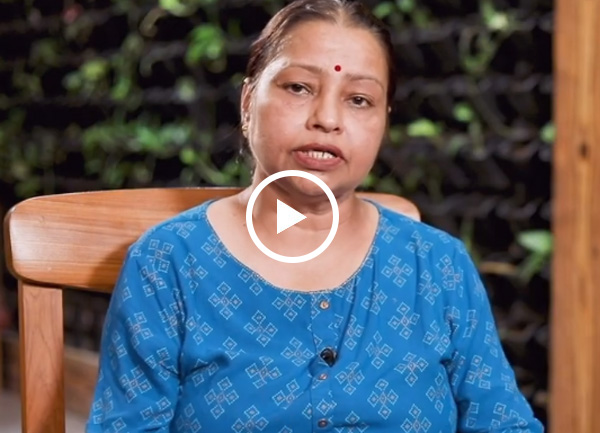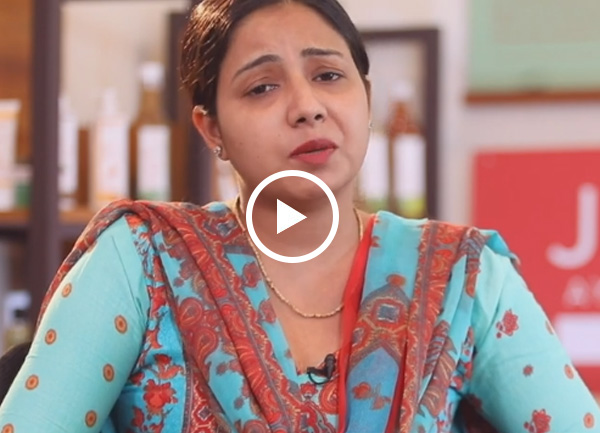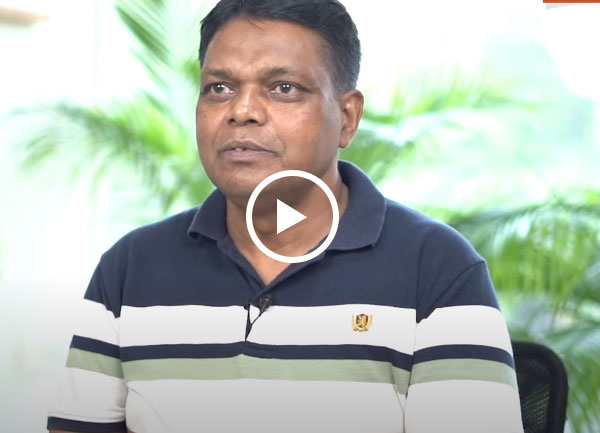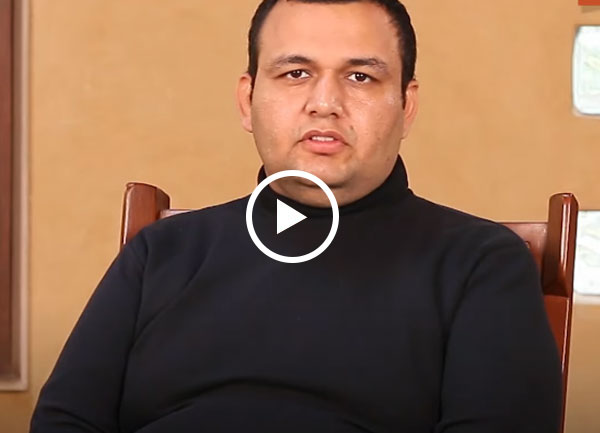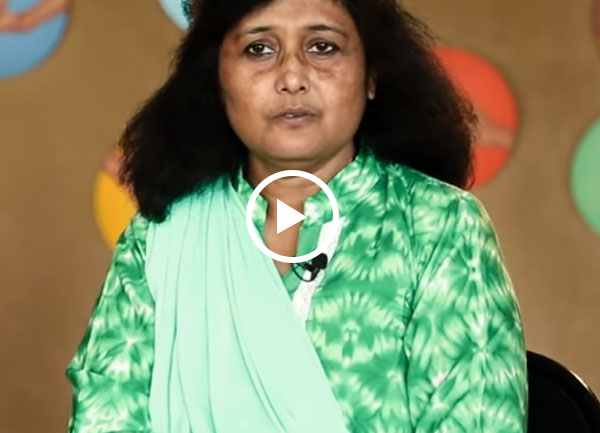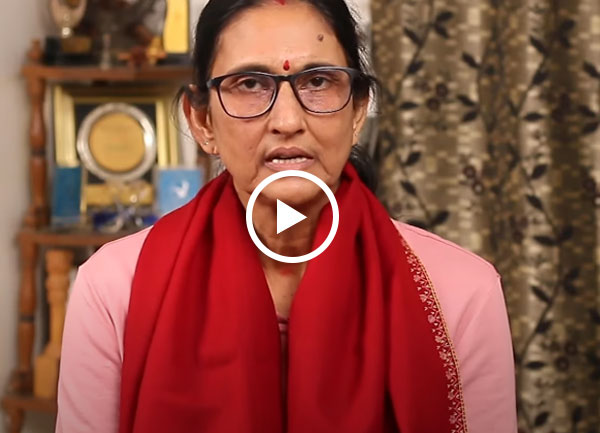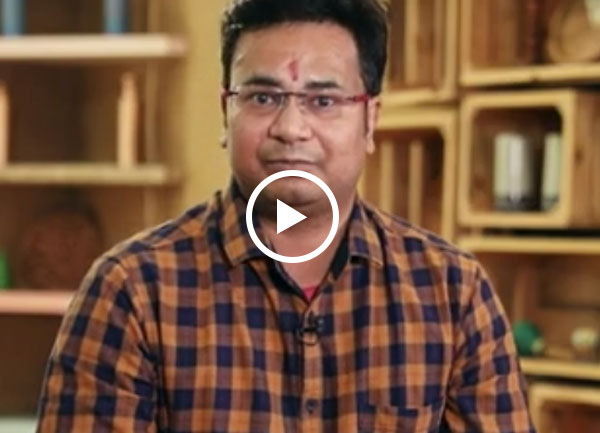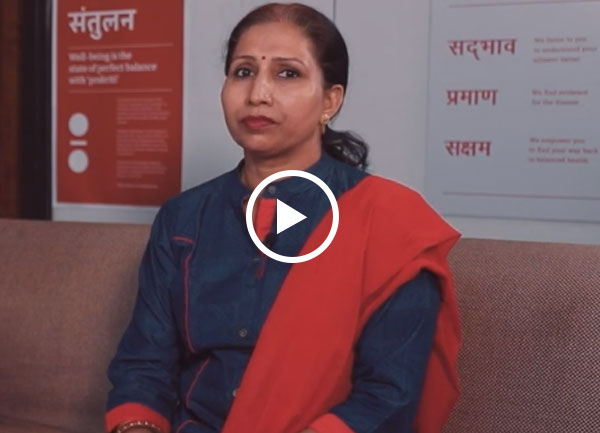

Successful Treatments
Clinics
Doctors
Ayurvedic Medicine For Sciatica Pain
Sciatica pain is a common condition that occurs due to pain in the sciatic nerve. This nerve extends from the lower back through the buttocks and down across each leg. This is the very path along which sciatica pain travels.
The pain is caused due to compression and inflammation of the nerve, often due to a herniated disc (a disc in the spine that bulges or ruptures, putting pressure on the nerve roots) or spinal stenosis (narrowing of the spinal canal, putting pressure on the spinal cord as well as the nerves within it).
Sciatica pain is characterized by a tingling and “pins-and-needles” sensation that sometimes travels all the way down to the foot of the leg. While the condition is mostly common in older people aged around 40 to 50 years old, recently, it has also been seen to be rising in younger generations, pointing towards the increased health concerns in them.
How Ayurveda Sees Sciatica Pain
The condition of sciatica is known as Gridhrasi in Ayurveda. It is predominantly associated with the aggravation of the Vata dosha, which is responsible for the movement and nervous system of the body. According to Ayurveda, this aggravation causes toxin accumulation, which in turn causes constriction in the sciatic nerve, putting pressure on it and therefore causing pain.
Sometimes aggravation of the Kapha dosha can also be responsible for the pain because it's responsible for lubrication in the body. Its imbalance can contribute to dryness that occurs during this condition.
Symptoms Of Sciatica Pain:
Some common symptoms of this pain are:
- A sharp, tingling sensation that runs through the lower back, all the way along the backside of the leg.
- Numbness
- Muscle weakness
- Pain increases with pressure, ex, when you sneeze or cough, or walk.
Dosha Specific Symptoms:
Since each dosha is responsible for different functions of the body, symptoms related to each of them also differ.
- Vata sciatica: Being the primary dosha that is responsible for this pain, symptoms related to it show the most. They include pain because of dryness and stiffness in motion. Movement causes immense pain.
- Vata-Kapha sciatica: In this, additional symptoms such as lethargy and loss of appetite may also appear.
- Vata-Pitta sciatica: patients might experience pain with a burning sensation due to inflammation caused by the excess of heat, due to aggravation of the Pitta dosha.
Common Causes:
Some common modern and Ayurvedic causes and contributing factors for sciatica are:
Modern Causes:
- Lifestyle habits and posture can contribute to pressure put on nerves.
- Obesity also causes excessive weight on the nerves.
- Dehydration can cause a reduction in cushioning between the discs, increasing the risk of herniation.
- Smoking reduces the oxygen that reaches the spinal tissues, making them weak and prone to pressure.
- Trauma-induced injury
- A herniated or bulging disc
- Spinal stenosis
Ayurvedic Causes:
- The main cause of sciatica, according to Ayurveda, is the imbalance of the three doshas as a result of an unhealthy lifestyle, as well as unhealthy eating habits.
- This imbalance causes improper digestion, which causes the accumulation of Ama (toxins) in the lower back.
- The primary cause of sciatica pain is the aggravation of the Vata dosha, causing constriction in the lower back and, therefore, building pressure on the nerves.
- Sometimes, aggravation of the Kapha dosha can also contribute to additional symptoms related to emotions and metabolism.
- Aggravation of Pitta dosha is responsible for the inflammation and the resulting burning sensation.
Known Ayurvedic Medicines For Sciatica Pain:
- Nirgundi (Vitex Negundo): Nirgundi is an anti-inflammatory herb used in Ayurvedic treatments to ease pain and swelling. It relaxes the muscles and also reduces nerve irritation and Sciatica pain.
- Bala (Sida Cordifolia): Bala is believed to relax the nervous system and is often used to reduce inflammation and increase flexibility. It's especially useful for muscle pains and discomforts, especially for Sciatica patients.
- Punarnava (Boerhavia diffusa): Punarnava has diuretic and anti-inflammatory properties. It helps to reduce swelling, improve circulation, and detoxify the body, which supports healing in Sciatica.
- Eranda (Castor Roots): Castor oil from the Eranda plant is used in Ayurveda for relieving pain and inflammation. It is applied externally as a warm oil massage on the lower back and legs to help with muscle stiffness and pain.
- Shigru (Moringa Oleifera): Moringa has anti-inflammatory properties and is used to control joint pain and inflammation. It also strengthens bones and muscles, which helps ease Sciatica-related pain.
- Rasna (Pluchea Lanceolata): Rasna is believed to have analgesic and anti-inflammatory properties. It helps relax muscles and also reduces swelling and pain from Sciatica.
- Jambira (Lemon): Lemon is known to cool and soothe inflammation. Additionally, it helps improve circulation and also supports tissue repair, which helps with Sciatica pain.
- Masha (Black gram): Black gram provides nourishment for muscles and joints and relieves muscle strains and nerve pain. It's used in Ayurvedic preparations for boosting muscle strength and relieving Sciatica pain.
Though Ayurvedic medicines are generally safe, they should never be taken without the guided expertise of an Ayurvedic doctor.
Jiva Ayurveda’s Ayunique Treatment Philosophy - A Holistic Approach To Sciatica Treatment:
At Jiva Ayurveda, we take a holistic approach towards the treatment of sciatica pain by aiming to cure its root cause, rather than only its symptoms.
Jiva Ayurveda provides a holistic treatment suited to each patient’s bodily constitution. Along with herbal remedies, our Ayurvedic treatment program includes teaching yoga poses, meditation, and mindfulness techniques to ease mental stress and pressure on the nerves. Jiva Ayurveda provides therapies such as Panchakarma therapies and therapeutic oil massages to cleanse the body of any accumulated toxins. We also provide guidance on various lifestyle changes and eating habits that would help cure this condition.
Key Lifestyle Changes And Eating Habits:
Both our lifestyle and our food habits affect our bodies. Our posture determines how much pressure we put on what part of our body, and our strength determines how resistant our bodies’ tissues are to this pressure, which is why it is important to take care of both to gain holistic health.
Lifestyle Tips:
- Avoid a sedentary lifestyle. Be active. Moving helps with the lubrication of the spine. It also helps avoid putting pressure on the nerves for a prolonged period of time.
- Correct your posture. Keeping an upright posture helps reduce unnecessary pressure on the lower back.
- Maintaining a healthy weight also helps reduce pressure on the back.
- Get an adequate amount of sleep to reduce tension.
- Stay hydrated. Keep your body provided with enough fluids for it to stay lubricated.
- Use a heating pad or ice to improve blood circulation and release muscle tension.
- Quit smoking because it reduces the amount of oxygen reaching the spine, therefore, reducing the amount of nutrients that reach there through it.
Dietary Tips:
- Include anti-inflammatory foods such as turmeric and ginger in your daily life.
- Include fibre-rich foods such as leafy vegetables, fruits such as apples and bananas to help with digestion.
- Drinking plenty of water and healthy fluids like organic juices to keep the spinal discs hydrated
- Eat foods with vitamin B12 to help improve nerve health.
When To Consult An Ayurvedic Doctor?
According to Jiva Ayurveda, if you experience symptoms such as:
- A sharp and shooting pain that travels from the lower back across the back of the leg.
- Numbness or a “pins and needles” sensation in the affected area.
- Muscle weakness, making it difficult to move.
- Difficulty in performing everyday tasks.
- Difficulty in movement.
- Pain increases over time,
You should immediately contact our health care experts. Early treatment is essential as sciatica can become chronic if not treated timely.
Conclusion
Sciatica pain is extremely uncomfortable and painful. It can affect your daily life in a very negative manner. This condition should be treated as soon as possible, as it can become chronic and worsen over time if not treated.
At Jiva Ayurveda, you will get a holistic treatment pertaining to your bodily constitution, which will allow our doctors to tailor a treatment that will suit you best. We incorporate various ayurvedic medicinal herbs along with yoga, meditation, lifestyle changes, and dietary changes that will help you cure the condition from its root.
FAQS:
Is Ayurvedic treatment effective for sciatica, and can it be cured permanently?
Yes, Ayurvedic treatment can be effective for sciatica, offering significant relief and long-term management by addressing the root cause. While a complete "cure" depends on the severity and underlying cause (like a structural issue), a holistic approach combining treatments, lifestyle changes, and dietary modifications often leads to substantial and lasting relief, preventing recurrence.
How long does it take to see results with Ayurvedic treatment?
Results vary depending on the condition's severity, individual constitution, and adherence to the treatment plan. Generally, patients might see improvement within a few weeks of consistent treatment, but patience and consistency are key for long-term relief.
What are the main Ayurvedic treatments and therapies for sciatica?
Ayurvedic treatment focuses on balancing Vata dosha, reducing inflammation, and strengthening the nervous system. Key therapies include:
- Panchakarma: Detoxification treatments like Basti (medicated enema, considered very effective for Vata disorders), Virechana (purgation), and Swedana (herbal steam therapy).
- External Therapies: Abhyanga (warm herbal oil massage), Kati Basti (pooling warm medicated oil on the lower back), and Patra Pinda Sweda (application of warm herbal poultices) to relieve muscle tension and nerve compression.
- Herbal Remedies: Internal and external use of anti-inflammatory herbs like Ashwagandha, Guggulu, Shallaki, Nirgundi, and Turmeric.
What role does diet play in managing sciatica with Ayurveda?
Diet is crucial. Ayurveda recommends a Vata-pacifying diet to manage symptoms.
- Include: Warm, cooked, and nourishing foods, healthy fats (like ghee and sesame oil), and anti-inflammatory spices (ginger, turmeric, garlic).
- Avoid: Cold, dry, raw, and processed foods, as well as excessive caffeine, which can aggravate Vata dosha and inflammation.
Can I combine Ayurvedic treatment with conventional medicine?
It is important to consult with a qualified healthcare professional before combining Ayurvedic treatment with conventional medicine. Some herbs may interact with prescribed medications. An Ayurvedic practitioner can help safely integrate therapies into your overall treatment plan.
What lifestyle changes are recommended for sciatica relief?
- Maintain proper posture, especially when sitting or standing for long periods.
- Gentle movement: Regular, gentle exercises, stretches, and specific yoga poses (like Cat-Cow or Child's Pose) can improve flexibility and strength, but avoid anything that causes sharp pain.
- Manage stress: Practices like meditation and breathing exercises can help reduce stress-induced muscle tension.
- Ensure adequate rest: Lying on a firm surface can help align the spine and reduce pain.
Our Happy Patients
Disease
- Ayurvedic Treatment for Obesity
- Ayurvedic Treatment for Migraine
- Ayurvedic Treatment for Heat Stroke
- Get Ayurvedic Treatment for Paralysis
- Ayurvedic Treatment for Mastitis
- Ayurvedic Treatment for Gangrene Foot
- Ayurvedic Treatment for Granuloma
- Ayurvedic Treatment for Amyloidosis
- Ayurvedic Treatment for Thrombocytopenia
- Ayurvedic Treatment for Dengue
- Ayurvedic Treatment for Measles
- Ayurvedic Treatment for Fistula in Ano
- Ayurvedic Treatment for Malaria
- Ayurvedic Treatment for Plantar Fasciitis
- Ayurvedic Treatment for Chikungunya
- Ayurvedic Treatment for Sepsis
- Ayurvedic Treatment for Addison's Disease
- Get Ayurvedic Treatment for Eye Floaters
- Ayurvedic Treatment for Eye Flu
- Ayurvedic Treatment for Herpes
- Get Ayurvedic Treatment For Teeth Cavities
- Get Ayurvedic Treatment for Tooth Pain
Latest Blogs
- Get An Effective Ayurvedic Treatment For Gastritis
- The Complete Guide to Ayurvedic Detox: Tips, Techniques, and Benefits
- Ayurvedic Hair Growth Secrets Revealed
- Tired of Dull Skin? Try These 5 Ayurvedic Hacks
- Can Ayurveda Reverse Your Diabetes?
- Accelerate Your Dengue Recovery with Ayurveda
- 5 Little Known Facts About Ayurvedic Therapies
- 5 Ayurvedic Secrets for Healthy & Shiny Hair
- Get Ayurvedic Treatment for Fatty Liver
- Get Ayurvedic Treatment for Eyes
- Get Ayurvedic Treatment for Kidney Stones
- How to get rid of a sinus headache with Ayurveda?
- How To Cure Scalp Psoriasis With Ayurveda?
- Migraine Treatment In Ayurveda
- Get Ayurvedic Treatment for Obesity
- When To Worry About Varicose Veins?
- 10 Effective Ways To Get Rid of Piles
- How To Cure PCOS and PCOD Naturally?
- Get Ayurvedic Treatment For PCOS
- Get Relief From Back Pain With Ayurvedic Treatment
Ayurvedic Doctor In Top Cities
- Ayurvedic Doctors in Bangalore
- Ayurvedic Doctors in Pune
- Ayurvedic Doctors in Delhi
- Ayurvedic Doctors in Hyderabad
- Ayurvedic Doctors in Indore
- Ayurvedic Doctors in Mumbai
- Ayurvedic Doctors in Lucknow
- Ayurvedic Doctors in Kolkata
- Ayurvedic Doctors in Patna
- Ayurvedic Doctors in Vadodara
- Ayurvedic Doctors in Ahmedabad
- Ayurvedic Doctors in Chandigarh
- Ayurvedic Doctors in Gurugaon
- Ayurvedic Doctors in Jaipur
- Ayurvedic Doctors in Kanpur
- Ayurvedic Doctors in Noida
- Ayurvedic Doctors in Ranchi
- Ayurvedic Doctors in Bhopal
- Ayurvedic Doctors in Ludhiana
- Ayurvedic Doctors in Dehradun

